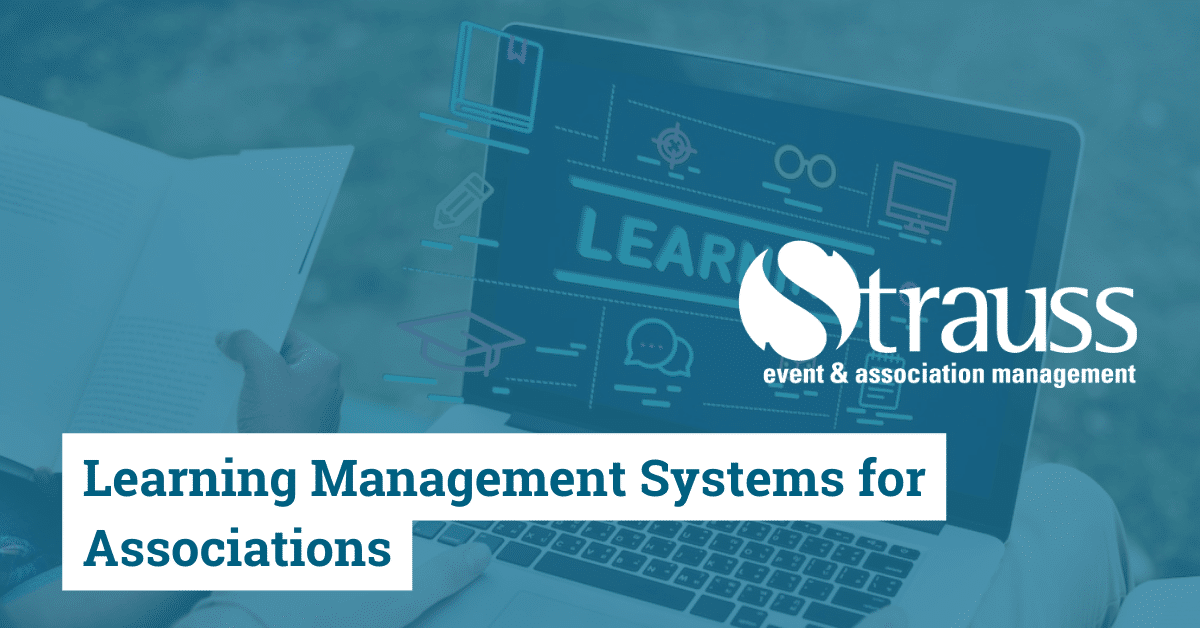A learning management system is a software application for the administration, documentation, tracking, reporting, automation, and delivery of educational courses, training programs, or learning and development programs – Wikipedia.
An association’s learning management system, also called LMS, can be an important part of your member recruitment and retention.
The Benefits of an LMS
Do you currently offer online learning resources for your members that can be purchased and viewed at any time, allowing them an opportunity to earn continuing education credits? If the answer is no, why not?
There are many benefits for your association by having an LMS, such as:
- More opportunities for learning and education for members.
- Member retention is another member benefit you can add to your list.
- The ability for members to gain continuing education credits.
- Facilitates online member engagement by optimizing the learning process for your members.
- Generates revenue; you can charge members and non-members a fee to access specific learning resources.
- Board/committee onboarding stores all documents in one location, making it more efficient.
- Platform to host all your association’s valuable content in one place for members to access, like videos, white papers, webinars, etc.
An LMS offers your members access at their fingertips to on-demand learning anywhere at any time, making the process streamlined. It can be a one-stop shop for all your member’s learning needs.
The Many Features of an LMS
If you google LMS, you will see a large list of companies with this offering available, each with many features that are the same and those specific features that make them stand out.
I have highlighted some features below that I believe make a good LMS:
- Content library -This feature will allow you to organize and group all your content.
- Member-only content – Ability to distinguish members-only content from materials available to everyone with gated content, log in required.
- Tools for testing – such as quizzes, tests, and exams.
- Certificates – Once members have passed the required quizzes, tests, and exams, your LMS can grant them the certificate of attendance. These are downloadable and printable, so members can save them for their records.
- Live streaming of in-person events.
- Set up online payment options so that all members and non-members must pay online before being given access to the content, creating less hassle for staff trying to collect cheque payments after the fact.
What Requirements does your Association need in an LMS?
Once a decision has been made about integrating an LMS into your association, you will need to review what requirements you would like to have within this system.
The first step is to get your association team together to review the necessary requirements. You can make a list yourself; however, having input from all involved is highly recommended. Information pulled from member surveys to see what the members want and need is also very helpful.
A few key items that all associations should look at when reviewing an LMS are:
- Ease of use. Is it user-friendly and easy to navigate for both the member and administrative staff?
- Integrating with your current AMS (Association Management System) allows the member to use just one required login to access your AMS and LMS instead of keeping track of multiple logins.
- Does the company have good reviews, are they local, and what is their support like?
- Training for staff and volunteers.
- Are there options for posting on-demand videos as well as live streaming?
- Ability to create continuing education credit certificates
- Custom branding. A system customized to your association’s branding is ideal. You do not want it to look like it is a separate entity.
A Learning Management System offers many great features, such as a dedicated place for online learning content and the ability for members to take assessments online and receive continuing education credits. When an association offers members a more convenient, easily accessible platform to obtain certifications and other educational benefits, they will have a more positive experience and are more likely to maintain their membership within the association.

